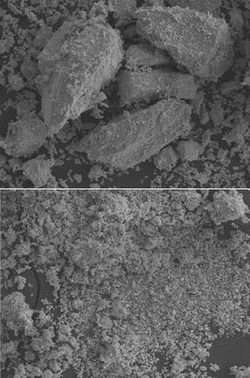Ultrasound And Algae Team Up To Clean Mercury From Sediments

Ultrasound and algae can be used together as tools to clean mercury from contaminated sediment, according to an Ohio State University study. This research could one day lead to a ship-borne device that cleans toxic metals from waterways without harming fish or other wildlife, said Linda K. Weavers, the John C. Geupel Chair in Civil Engineering at Ohio State.
Doctoral student Ziqi He described the group's latest results in a poster session March 27 at the American Chemical Society meeting in Atlanta.
Weavers' research group previously determined that ultrasonic vibrations can shake mercury loose from sediment.
"We found ultrasound to be very effective at getting mercury out of sediment and into water," He explained. "But then we needed a third party to get the mercury out of the water. That's how we got the idea to add a biological element to the treatment."
Weavers and He joined with Richard Sayre, professor of plant, cellular and molecular biology at Ohio State, and Surasak Siripornadulsil, a former graduate student in the university's biophysics program. Sayre's team has genetically modified a species of algae to boost its natural ability to absorb heavy metals.
In laboratory tests, student He vibrated an ultrasonic probe inside beakers containing water, sediment, and algae. The vibrations freed mercury from the sediment, and within seconds, the algae adsorbed up to 60 percent of the mercury from the water. The combined system of ultrasound and algae removed 30 percent of the mercury from sediment within the first few minutes.
There are alternative cleanup methods that also absorb a high percentage of metals, Sayre admitted, but they are less selective -- they absorb all metals. His modified algae species absorbs five times the normal amount of a select group of toxic metals, including mercury, cadmium, copper, and zinc.
"Say you were trying to clean water that contained effluent with a lot of calcium or iron in it -- or seawater, which contains sodium," Sayre said. "If your algae aren't selective, they'll absorb those other metals and you'll recover less mercury. So the advantage of these modified algae is that other metals don't interfere with the cleanup."
Weavers envisions that boats could dredge sediments from contaminated waterways and clean them on board using ultrasonic equipment and algae-based filters. Then the clean sediment could be returned to its original location. Or, the equipment could be placed directly on sediment to treat it in place. Either procedure would leave wildlife unharmed, she said.
Source: Ohio State University















